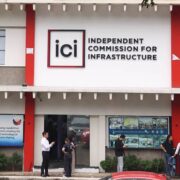Dormitory towns: A viable solution to urban congestion

It appears that not much attention has been given to the planning and development of what are called dormitory or using a less biased term, commuter towns, around Metro Manila, with more attention given to the problems of the metropolis. However, it should be mentioned that proper physical and sectoral planning of these ”dormitory towns” holds the promise of easing congestion in the metropolis and at the same time enhancing their development.
Towns that are located close to large cities are usually characterized as commuter or ”dormitory towns” i.e., places that residents use mostly as living and sleeping quarters after work or during weekends while choosing to work some distance away in the metropolis. This is the case in towns and small cities around Metro Manila such as those located in the provinces of Rizal, Cavite, Laguna, Bulacan, and Pampanga.
Commuter localities are easily accessible to Metro Manila via major roads and public transportation like buses, jeepneys, and trains. Accessibility to the metropolis allows shorter commuting time to work or study in the city. Commuters also choose to live within these localities due to lower housing rental rates compared to those in Metro Manila. According to multimedia writer Nicole Rondez’s modest estimate, in 2020, there were over two million commuters from outside Metro Manila, and the number is expected to increase, especially with the installation and extension of more efficient and faster railway lines north, east, and south of the metropolis.
However, these commuter towns lose their workers’ incomes, which are spent mostly on goods and services in the city. In the language of Keynesian economics, these are what may be called “import leakages,” in the sense that town workers “import” goods and services available only in the big city.
The other leakages from the small towns are taxes and savings. There is a need to divert the sizable combined incomes of commuters to their dormitory towns and create economic multipliers there to spread development to the peripheries.
Physical planning and development interventions can be focused on the more lagging commuter towns. From my experience in the planning of some towns around Metro Manila, one promising way of significantly minimizing income leakages is to formulate an integrated economic circuit. This is guided by an interconnected and efficient road system that links strategically located barangay settlement nodes that specialize in certain products and economic activities.
It can be expected that with these development initiatives, the towns may prosper and commuters may even seek employment back to their hometowns to relieve themselves of the stress of commuting. It can also relieve the metropolis of population and vehicle congestion.
MELITON JUANICO,
melitonbjuanico@gmail.com

















